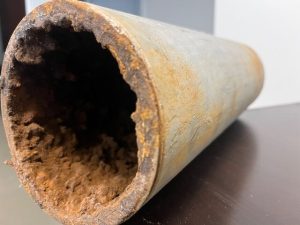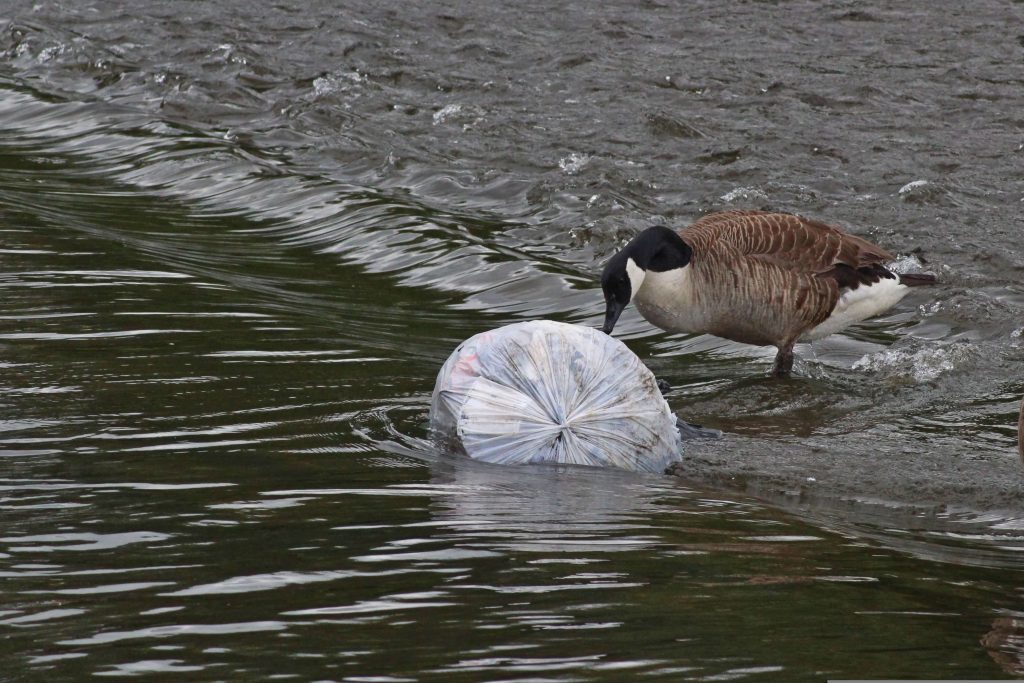It is not uncommon to receive boil water advisories as well as communications asking residents to run the water before consuming it. These measures are taken by municipalities when they detect a risk of contamination in the drinking water network. The following question then arises: what are these contaminants in water?
Perfluoroalkyl and Polyfluoroalkyl substances (PFAS)
Perfluorinated substances are a family of chemical compounds present in many everyday items. These are found particularly in food packaging, pesticides, paint and water- and stain-resistant products1. It is by being absorbed by the soil and transported by rain that PFAS are then found in the drinking water network2.
According to a study carried out by the University of Montreal, the situation of contaminants in water is pretty bad. In facts, 99.3% of drinking water in Quebec contains PFAS! Long-term consumption of PFAS can lead to health problems such as cancer risks and a weakened immune system3.
Lead

Lead can be found in the drinking system following the dissolution of lead already present in the pipes and in the solders. In the 1940s and 1950s, it was not uncommon to see lead pipes being installed.
However, the National Plumbing Code now limits its use.
For lead consumption to have a real effect on health, it must be regular, long-term or in high concentration. Such consumption could cause vomiting, anemia and dizziness4. However, for occasional consumption and low concentration, the health risks are slim5.
Trihalomethanes (THMs)
THMs are chemicals that are formed when chlorinated water comes into contact with organic substances. Since it is a highly volatile contaminant that degrades in the air, its concentration in the drinking water network can vary depending on the ways and products that are used to treat it.
In Quebec, water is treated and analyzed so that the annual average THM in water does not exceed 80mg per liter. This regulation is the strictest in Canada. Since the allowable quantity of THM in water is low, very large amounts would have to be consumed over several years to notice its effects on the body6.
Microplastics
 Microplastics form when objects such as straws, tires, or single-use bags degrade in water. This creates small plastic fibres that pass through the water filtration process and end up in the drinking water system7.
Microplastics form when objects such as straws, tires, or single-use bags degrade in water. This creates small plastic fibres that pass through the water filtration process and end up in the drinking water system7.
Since studies on the effects of microplastics on the body are recent, questions still remain. However, experts believe that these could have an impact on the organs and the reproductive system8.
E. coli
E. coli bacteria are contaminants that come from fecal matters and are then carried into the water system.
Consuming water contaminated with E. coli can lead to vomiting, nausea and diarrhea9.
In more severe cases, E. coli can lead to death10.
To learn more about the effects of this bacterium, we invite you to read the following article from Darspec: Walkerton tragedy: why protect drinking water?
What to remember?
To conclude, even if the effects of contaminants on health are often more visible in the long term, they can still affect people with vulnerable health following short-term consumption. However, it is important to mention that filtration plants work continuously to adequately filter and eliminate contaminants in water. The role of building owners then kicks in, that of protecting their drinking water network. It would be a shame to waste and contaminate the water which municipalities spend so much effort and money. As an owner, manager or user, what are you doing to protect and save drinking water in your building?
Article by Marianne Raymond, published August 5th, 2024, extracted from Darspec.
References :
1. Institut national de santé publique du Québec. (2023, août 17). PFAS : définition et utilisation. Récupéré sur Gouvernement du Québec: https://www.inspq.qc.ca/pfas/pfas-definition-et-utilisation
2. DiproClean. (s.d.). Les PFAS sont des polluants éternels qui menacent notre santé : quelles sont les solutions pour les éliminer dans votre environnement ? Récupéré sur DiproClean: https://www.diproclean.com/pfas-polluant-eau-potable-eliminer-solutions-pxl 167_202.html#:~:text=au%20charbon%20actif-,Qu’est%2Dce%20que%20les%20PFAS%20%3F,eau%20et%20%C3%A0%20la%20graisse
3. Université de Montréal. (2023, février 27). PFAS présentes dans l’eau potable au Québec : cinq
municipalités en eau trouble . Récupéré sur udem nouvelles : https://nouvelles.umontreal.ca/article/2023/02/27/pfas-presentes-dans-l-eau-potable-au-quebec-cinq-municipalites-en-eau-trouble/
4. Gouvernement du Canada, (2019, mars). Recommandations pour la qualité de l’eau potable au
Canada : document technique – le plomb. Récupéré sur Gouvernement du Canada : https://www.canada.ca/fr/sante-canada/services/publications/vie-saine/recommandations-pour-qualite-eau-potable-canada-document-technique-plomb/document-reference.html#a9.1
5. Gouvernement du Québec. (2021, mars 26). Plomb. Récupéré sur Gouvernement du Québec: https://www.quebec.ca/agriculture-environnement-et-ressources-naturelles/eau-potable/contamination-eau-reseau-distribution/plomb
6. Institut national de santé publique du Québec. (2022, décembre). Trihalométhanes. Récupéré sur
Gouvernement du Québec: https://www.inspq.qc.ca/eau-potable/trihalomethanes
7. Kinetica. (2024, avril 12). Que sont les microplastiques ? . Récupéré sur Kinetico: https://resourcecenter.kinetico.ca/fr/problemes-courants-relatifs-a-l-eau/les-microplastiques-dans-l-eau/
8. Legault, J.-B. (2024, janvier 23). L’eau embouteillée contiendrait de grandes quantités de lastiques microscopiques . Récupéré sur La Presse: https://www.lapresse.ca/actualites/sciences/2024-01-23/l-eau-embouteillee-contiendrait-de-grandes-quantites-de-plastiques-microscopiques.php
9. Gouvernement du Québec. (2016, août 22). Escherichia coli (E. coli), coliformes fécaux ou
entérocoques – Avis d’ébulition. Récupéré sur Gouvernement du Québec: https://www.quebec.ca/agriculture-environnement-et-ressources-naturelles/eau-potable/contamination-de-leau-reseau-de-distribution/e-coli-coliformes-fecaux-ou-enterocoques
10. Institut Pasteur. (2024, février). Escherichia coli entérohémorragiques (ECEH). Récupéré sur
Institut Pasteur : https://www.pasteur.fr/fr/centre-medical/fiches-maladies/escherichia-coli
